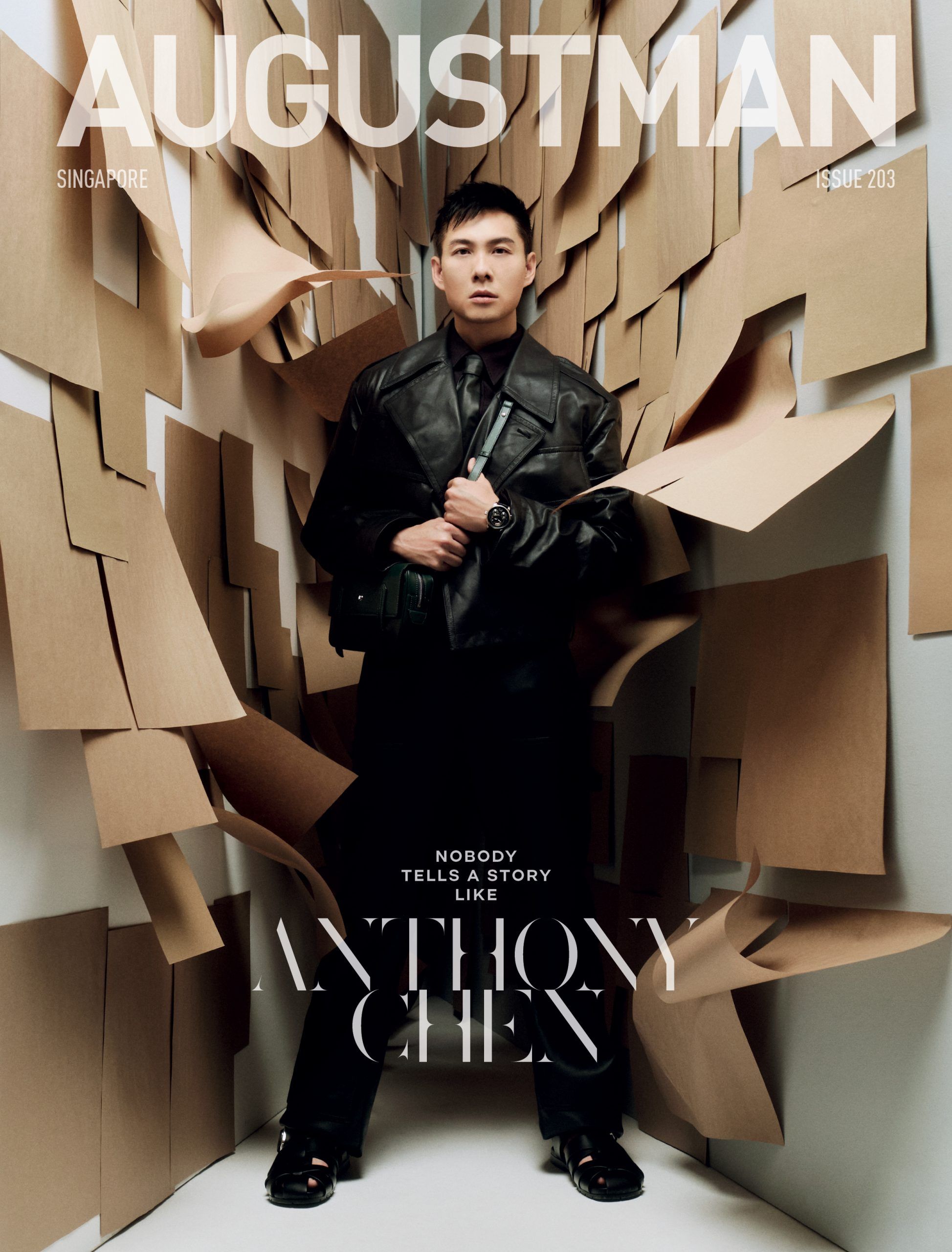Not many children’s enrichment centres in United Square can boast Hollywood endorsement. But newcomer Chess at Three, a kid’s club with a focus on the world’s most renowned strategy board game, has recently received praise from X-Men and Les Miserables superstar Hugh Jackman.
The club, which opened last month with a guest appearance from YouTube sensation Blippi, offers programs ranging from playgroups for caregiver-accompanied infants as young as six months to advanced lessons for kids of school-going age. The curriculum developed by co-founders Tyler Schwartz, Jon Sieber and Harlan Alford is the product of meticulous research and rigorous testing, designed specifically to engage children.
Intrigued by how it stands out – particularly in pedagogy and approach – from the many children’s clubs and centres at United Square, we sat down with Chess at Three CEO Jon Sieber to discuss chess, and its place in the digital age.
AM: Tell us more about Chess at Three.
Chess at Three teaches chess to young children based on the philosophy that kids as young as three are capable of understanding complex subjects if you deliver them through fun, engaging stories.
Chess had a renaissance when it returned to popular culture in Queen’s Gambit. How do you think this centuries-old game can remain relevant today?
The game is an exercise in wit and critical thinking. In this day and age, many people have a strong desire to exercise these skills to logically outwit or outmaneuver their opponents. I don’t think it will ever diminish.
Why choose to focus on teaching young kids in particular how to play chess?
We focus on teaching young kids aged three years and up to love chess because we want them to enjoy the benefits of playing chess. Children in this age group are traditionally considered too young to learn the game. We have developed a fun approach that enables them to improve their IQ, enhance their critical thinking, develop executive function, and increase concentration — all through learning to play chess. A lot of parents are now looking for something engaging that draws their children away from screen time. Chess at Three is something that is both fun and educational, which is a win-win.
In an age where children are more engaged by digital content and video games, how do you sustain their interest in something “analog” like chess?
At Chess at Three, we’re counteracting this through narrative-based storytelling. Stories are core to human beings’ DNA. Stories were arguably one of the first ways for humans to connect with one another. We rely on the power of narrative and the ability to use narrative to engage children. If a child needs more than just a story, our curriculum also has physical elements to it. We engage children through role-playing, and what we call Chessersizes. This is when the children are encouraged to move like one of the chess pieces. So, we might pretend to be the king. They stand up in the classroom and move like the king, one slow step at a time. For some children, we’ve discovered this helps reinforce the concept that we’re trying to teach. Our chess lessons are designed to be as delightful as possible for children because we understand that when they first come to us there might be some fundamental hardwiring to be reworked.
When and how did you start playing chess? Are you a Grand Master?
I am not a grandmaster. I started playing chess by teaching chess. My first handful of students in 2011 were young, so I was able to kind of stay ahead of them. Then, as I taught more students and more advanced chess players, I spent more time studying chess. I am not an expert in chess. We prefer that our tutors are not grandmasters but rather people who are specifically able to relate to children in an empathetic way.

What do you love about chess?
I love a lot of things about chess. If I had to think about three in particular, number one is that every single time you play a chess game, you get a different experience. As the saying goes, chess is an ocean in which a mosquito can stand and an elephant can drown. It is played on a small grid — there are only 64 squares — but there are nearly endless possibilities. It’s probably statistically true that no single chess game has been played twice, just because of the amount of possible variations of moves. Number two is: It’s a universal language. If you unroll a chess set and set the game up, it is a universal language that any chess player can understand even when you go to a country where the culture is completely different and the language is completely different. Finally, and specifically for kids, there’s a loser and a winner. Dealing with the emotions of winning and losing is very important for a three-year-old to understand. You win with grace and you lose with dignity. No matter what happens, you say “good game”, and you try again. This is a very important life lesson for anyone.
We also understand that you fell in love with children’s theater while pursuing your undergraduate degree at Bethel University. How did the idea come about mixing both passions?
It came about, because Tyler Schwartz, one of my business partners (and a fellow co-founder of Chess at Three), was asked to teach chess to three- and four-year-olds, and there was no way of reaching them, other than making it entertaining and engaging. The traditional ways of rote memorization, and rule explanation were not going to engage three-year-olds and so we had to make it entertaining. This was when we realized that my understanding of children’s theater coupled with his understanding of teaching the game could evolve into a curriculum for teaching chess to this young age group.
Why did you start Chess at Three?
It became a concrete curriculum through rigorous testing. We would create stories and lesson plans for our clients who were eager for their young children to learn chess. When you teach three- or four-year-olds, they will tell you really quickly if they do not like it. And so, we would adapt our curriculum to arrive at lesson plans that delighted children and excited parents at the same time.
Why go into the business of educating children?
Our first lessons in 2011 were for students in The Washington Market School. This was when we realized that chess is a game that can be made accessible to anyone — not just to math-inclined seven-year-old boys (which was the classic assumption). When we were able to deliver this level of accessibility, parents were really keen on exposing their children to chess. Over the last couple of years, we’ve taken strategic steps to understand how we can deliver our curriculum to as many people as possible. This is ultimately why we have come to Singapore.
We’ve read that you use storytelling to teach chess. How is your curriculum different from traditional ways of teaching chess and why it is better?
The traditional way of teaching chess involves explaining the rules and then asking children to start memorizing opening sequences and board positions. At Chess at Three, we don’t explicitly teach children the rules of chess. We tell a silly story first and then we allow a child to discover the rule by relating to the character that we’re talking about. This gives a child the ability to discover the concept themselves. It makes them incredibly proud of what they’ve discovered. It also makes it an incredibly memorable experience for them. And it makes it sticky — meaning that it’s a concept that they hold on to a lot more.

What’s the thing(s) that sets apart a chess enthusiast from a top-class chess player?
A world-class chess player needs to make it their life. If you really want to get to the top rank of chess, it’s not something that you can just do casually. The top chess players in the world spend thousands of hours memorizing games, studying chess and practicing chess. It really takes committed exercise and study to become a world-class chess player. To be interested in chess, you just have to enjoy the game. You can do that at any level.
Which is your favorite chess piece and why?
My favorite chess piece is the pawn because pawns are stronger when they work together. I love the element of teamwork that a pawn brings to a chess game. They have the ability to become incredibly powerful when they get to the end of the board.
What are your plans for world domination?
The plan is to continue to expand geographically in markets where we think there is a strong demand. There have been a lot of European, as well as a couple of Middle Eastern, countries that have tried to roll out chess programmes nationwide. Nations see the value in chess, and want their citizens and their children playing it because they know that it will enhance their lives. We know we can share the benefits of playing chess with young children through our tried and tested curriculum. Then expanding outward from chess, we want to teach children all sorts of things, through our pedagogy of telling fun and engaging stories. Chess is just the first step in this.
For more information, visit chessat3.sg




